- Home
- Peter Ackroyd
Albion: The Origins of the English Imagination Page 2
Albion: The Origins of the English Imagination Read online
Page 2
Edward Elgar (1857–1934) C
Arthur Conan Doyle (1859–1930) W
Walter Richard Sickert (1860–1942) A
Frederick Delius (1862–1934) C
Rudyard Kipling (1865–1936) W
W. B. Yeats (1865–1939) W
Ernest Dowson (1867–1900) W
Edwin Lutyens (1869–1944) Arc
Aubrey Beardsley (1872–1898) A
Ralph Vaughan Williams (1872–1958) C
John Cowper Powys (1872–1963) W
Somerset Maugham (1874–1965) W
Augustus John (1878–1961) A
Lytton Strachey (1880–1932) W
Giles Gilbert Scott (1880–1960) Arc
Virginia Woolf (1882–1941) W
Percy Wyndham Lewis (1882–1957) A & W
D. H. Lawrence (1885–1930) W
Ezra Pound (1885–1972) W
T. S. Eliot (1888–1965) W
Paul Nash (1889–1946) A
Edward Wadsworth (1889–1949) A
Agatha Christie (1890–1976) W
Stanley Spencer (1891–1959) A
J. R. R. Tolkien (1892–1973) W
Wilfred Owen (1893–1918) W
Aldous Huxley (1894–1963) W
Henry Moore (1898–1986) A
William Walton (1902–83) C
George Orwell (1903–50) W
Evelyn Waugh (1903–66) W
Graham Greene (1904–91) W
Michael Tippett (1905–98) C
Samuel Beckett (1906–89) W
W. H. Auden (1907–73) W
Francis Bacon (1909–92) A
Benjamin Britten (1913–76) C
Frank Auerbach (1931–) A
Bridget Riley (1931–) A
Howard Hodgkin (1932–) A
David Hockney (1937–) A
INTRODUCTION
Albion
Of the English imagination there is no certain description. It has been compared with a stream or river, in the same manner as English poetry. It may be a fountain perpetually fresh and perpetually renewed, as in the Marian hymn of the early sixteenth century: “Haill! fresh fontane that springes new . . .” It can also be seen in close affinity with the flow of English poetical cadence:
In the hexameter rises the fountain’s silvery column; In the pentameter aye falling in melody back
It can be compared to an aeolian harp, of which. . . the long sequacious notes Over delicious surges sink and rise
These words of Coleridge suggest in turn the drawn-out melodies and vast chromatic harmonies of the English musical tradition. And yet, if a literary metaphor is required, then the most powerful may be taken from Henry Vaughan in the seventeenth century: “Like a great Ring of pure and endless light.” The English imagination takes the form of a ring or circle. It is endless because it has no beginning and no end; it moves backwards as well as forwards.
Albion is an ancient word for England, Albio in Celtic and Alba in Gaelic; it is mentioned in the Latin of Pliny and in the Greek of Ptolemy. It may mean “the white land,” related to the whiteness of the cliffs greeting travellers and suggesting pristine purity or blankness. But the cliffs are also guardians and Albion was the name of the primaeval giant who made his home upon the island of Britain. He is the “elemental and emblematic giant” whom G. K. Chesterton observed in his study of Chaucer, “with our native hills for his bones and our native forests for his beard . . . a single figure outlined against the sea and a great face staring at the sky.” His traces can be seen in the huge white horses which populated the primitive landscape, inscribed in the chalk of the hills. Today, like those fading memorials, Albion is not so much a name as the echo of a name.
There is clear evidence that the concept of Englishness—the “Englishness” of the Anglo-Saxons, as opposed to the “Britishness” of the Celts—circulated widely in the Anglo-Saxon world. Bede composed Historia Ecclesiastica GentisAnglorum (The Ecclesiastical History of the English People), where the “Gens Anglorum” were deemed to be a specific and identifiable race sprung out of Saxon and Old English roots. In Bede’s history, “the English were God’s new ‘chosen’ nation elected to replace the sin-stained Briton in the promised land of Britain.”1 (This belief in God’s providential choice, most ably expounded by Milton in the seventeenth century, survived until the latter part of the nineteenth century.) The notion of Englishness itself was a religious one from the moment Pope Gregory sent Augustine to England with the mission of establishing a Church of the English, in the light of his celebrated if apocryphal remark “non Angli sed angeli” (“Not Angles but angels”). A late seventh-century biography then declared that Gregory would lead “ gentem Anglorum” into the sight of God at the time of the Last Judgement. One of the reasons for the success of the Reformation, and the formation of the Church of England, lies in this national zeal.
King Alfred is associated with “the councillors of all the English race” in a late ninth-century treaty, and defined himself as “ rex Anglorum et Saxonum.” In the preface to the translation of Gregory’s Cura Pastoralis he alludes to “ Angelcynn,” or Englishkind, and “Englisc.” The “D” and “E” texts of the Anglo-Saxon Chronicle evince the spirit of English nationalism with reference to “this nation,” “all the people of England” and “all the flower of the English nation.” 2
The nationalism of the Anglo-Saxon period has been maintained by the fact that no other European nation has kept its boundaries intact over so many centuries. English literature, too, is among the oldest in Europe. It has been remarked that the heroic poetry of England after 900 strikes a singularly patriotic note, and we may regard that date as significant.
Archbishop Wulfstan’s “Sermon of the Wolf to the English,” of 1014, continually invokes theodscipe or the nation in an act of sympathetic if admonitory communion. As one historian has put it, “Englishness was the creation of the Anglo-Saxons, and it was they who made England.” 3 It was of crucial importance, in this context, that many charters and wills were composed in Old English; the language itself becomes an image of unity and identity. In that most important of Old English poems, Beowulf , the voices possess “eloquence and understatement,” a “melancholy” and “firm resolve,”4 which were bequeathed to subsequent English literature. In the art of the ninth and tenth centuries, too, there is an unmistakable Englishness in the employment of light and delicate outline. In the architecture of the same period irregularity and the pragmatic assembling of parts have also been deemed to be essentially English in spirit.
Yet from the beginning there are ambiguities and paradoxes. In painting, for example, the Anglo-Saxon style was inspired and modified by continental models before it could achieve maturity; the insular idiom was most fully expressed and developed precisely in relation to Mediterranean art of the same period. It could not exist without its continental counterpart. The power of Anglo-Saxon culture springs in part from absorption and assimilation, thus emphasising a more general point concerning “the susceptibility of the English artist to alien influences . . . and his willingness to tolerate and even adapt to his own purpose any acceptable new elements.” 5 This has been the pattern of the centuries, and indeed it can be maintained that English art and English literature are formed out of inspired adaptation; like the language, and like the inhabitants of the nation itself, they represent the apotheosis of the mixed style.
We may identify here a sense of belonging which has more to do with location and with territory, therefore, than with any atavistic native impulses. There has been much speculation on the subject of location theory, in which the imperative of place is more significant than any linguistic or racial concerns. In The Spirit of the People: An Analysis of the English Mind, published in 1912, Ford Madox Ford suggested that “it is absurd to use the almost obsolescent word ‘race.’ ” He noted in particular the descent of the English “from Romans, from Britons, from Anglo-Saxons, from Poitevins, from Scotch . . .” which is perhaps the best antidote to the nonsensical be
lief in some “pure” Anglo-Saxon people. In its place he invoked the spirit of territory with his belief that “It is not—the whole of Anglo-Saxondom—a matter of race but one, quite simply, of place—of place and of spirit, the spirit being born of the environment.” In Ford Madox Ford’s account that tradition is in some sense transmitted or communicated by the territory. It is a theory which will also elucidate certain arguments within this book.
And so the enterprise is begun. This study will concern the origins, and not the history, of the English imagination. It will not deal proportionately, therefore, with every period and every author or every artist. Beginnings will be granted more importance than endings. I will mention other literatures only in passing, and for this I offer no excuse. There will no doubt be many errors and omissions, to which I plead guilty in advance. I am fully aware that certain qualities defined here as peculiarly English are not uniquely so. Russian melancholy, and the Persian miniature, are cases in point. Yet such qualities flourish within an English context in singular and particular ways; I have simply endeavoured to trace their formation. There may also be faults of a native hue. If this book is diverse and various, digressive and heterogeneous, accumulative and eclectic, anecdotal and sensational, then the alert reader will come to realise that the author may not be entirely responsible.
Peter Ackroyd,
London,
May 2002
Patterns of Eternity
“Trees V: Spreading Branches,” 1979, by Henry Moore
CHAPTER 1
The Tree
When William Wordsworth invoked “the ghostly language of the ancient earth” he spoke more, perhaps, than he knew. The mark or symbol of the hawthorn tree is to be found in the runic alphabet of the ancient British tribes, as if the landscape propelled them into speech. The worship of the forest, and of forest forms, characterised the piety of the Druids in whose rituals the spirits of the oak, the beech and the hawthorn are honoured. According to the texts of the classical historians the centre of the Druidical caste was to be found in Britain, from whose shores the practitioners of magic sailed to the European main-land. The forest worship of the northern and Germanic tribes, who were gradually to conquer Britain from the fifth to the seventh centuries, may derive from the Druids’ ministry. That is why Hippolyte Taine, the French critic and historian who in the 1860s completed a capacious history of English literature, hears the first music of England in the fine patter of rain on the oak trees.
The poetry of England is striated with the shade that the ancient trees cast, in a canopy of protection and seclusion. Thus John Lydgate, in the fifteenth-century “Complaint of the Black Knight,” remarks of where the charm of darkness and mystery descends upon the English landscape. In the nineteenth century Tennyson recalls how and in that tremulous dusk the trees themselves are images of peacefulness and protection.
Every braunche in other knet, And ful of grene leves set, That sonne myght there non discende
Enormous elm-tree boles did stoop and lean Upon the dusky brushwood underneath Their broad curved branches . . .
In the penultimate chapter of Jane Eyre, before her final awakening, the heroine passes through “the twilight of close ranked trees” like a “forest aisle.” “The Knight’s Tale” of Geoffrey Chaucer is set in Athens but the funeral pyre of Arcite there is adorned with the trees of England rather than those of ancient Greece—“ook, firre, birch, aspe, alder, holm, popler”—in a refrain which was in turn adopted by Spenser in the first book of The Fairie Queene where “the builder Oake,” “the Firre that weepeth still” and “the Birch for shaftes” are among “the trees so straight and hy.” For Spenser in the late sixteenth century the trees prompt mythical longings, as if their ancient guardians might still be summoned by the vatic tone of English epic. The hawthorn was the home of fairies, and the hazel offered protection against enchantment; the great oak itself descended into the other world. It is Milton’s “monumental Oke.” As a child William Blake saw angels inhabiting the trees of Peckham Rye; as a child, too, his disciple, Samuel Palmer, was entranced by the shadows of an elm tree cast by the moon upon an adjacent wall. Wordsworth stood beneath an ash tree in the moonlight and was vouchsafed visions
Of human Forms with superhuman Powers.
The same poet saw among yew trees “Time the Shadow,” and wrote other verses upon “The Haunted Tree.”
The magical talismans of Puck, in Rudyard Kipling’s Puck of Pook’s Hill, are the leaves of the oak, the thorn and the ash which afford the children access to earlier times. As the Roman poet Lucan apostrophised the Druids of the English isle in the first century—“To you only is given knowledge or ignorance (whichever it be) of the gods and powers of heaven; your dwelling is in the lone heart of the forest.” In Piers the Plowman, composed in the fourteenth century, the divine edict of a later god ensures that “Beches and brode okes were blowen to the grounde.”
These sources fill with vigour and energy the legends of Robin Hood, hiding himself among the trees of Sherwood Forest; he may be descended from the English imp Robin Goodfellow, but he is more akin to the formidable figure of the Green Man. The fable may have begun in 1354 with the incarceration of a “Robin Hood” for the poaching of venison in the forest of Rockingham, but no local or secular origin can account for the power which this green figure among the trees has been granted.
By 1377 the “rymes of Robyn Hood” were as familiar as household tales, and as late as the sixteenth century the local festivals of the Thames and Severn Valleys, and of Devon, were still associated with plays of Robin Hood. It is not necessarily an old, or forgotten, piety. In Women in Love D. H. Lawrence’s twentieth-century characters Ursula and Birkin drive among “great old trees.” “ ‘Where are we?’ she whispered. ‘In Sherwood Forest.’ It was evident he knew the place.” He knew it spiritually, atavistically. “ ‘We will stay here,’ he said, ‘and put out the lights.’ ”
And then in the darkness they may have seen the Ash Tree of Existence, the Tree of Jesse and the Golden Bough. The Tree of Jesse was “the first design to be integrated in England to fill a large window.” 1 As part of the mournful decorations upon English tombstones, shields hang from trees. The palm-tree vault in Wells Chapter House, begun c. 1290, endures as a memorial of sacred stone beyond the depredations of rain and wind and frost. In the biblical narrative of the Cursor Mundi, composed in English in the early fourteenth century, there are holy trees which owe more to English folklore than to biblical tradition; a heavenly light shines upon them, and they have an innate virtue which wards off evil and heals sickness. In an old English carol Jesus talks to a tree while still in his mother’s womb, and images of the cross in English art are generally those of a lopped tree-trunk. In The Dream of the Rood, a meditation upon the Crucifixion of Christ, the tree speaks:
ic waes aheawen holtes on ende . . .
Rod waes ic araered . . .
eall ic waes mid blode bestemed
“I was cut down, roots on end . . .
I was raised up, as a rood . . .
I was all wet with blood.”
Some lines from this Anglo-Saxon tree poem were carved in runes upon the great Ruthwell Cross, one of the English stone crosses which create a sacred topography of the nation. The Ruthwell inscription can be dated to the late seventh century, while in its surviving state the poem is believed to derive from eighth-century Northumbria; yet still the stone speaks, and the tree sighs.
On the territorial charters of Anglo-Saxon kings a hawthorn tree is generally employed as a boundary marker; it becomes the root of time and space, as a measure of continuity and ownership. In The Child that Books Built Francis Spufford remarks that “there was a forest at the beginning of fiction, too. This one spread for ever.”2 The tree encloses a communal memory—“beyond the memory of anyone now living,” as the medieval rubric was later to express it—and from it derives that sense of place, of literal rootedness, which is one of the great themes of the English imaginati
on.
So in The Mill on the Floss George Eliot describes a country town “which carries the traces of its long growth and history, like a millennial tree.” In “The Hollow Tree” John Clare, the nineteenth-century poet who laboured with the land, celebrates the “battered floor” of an anciently hollowed and hallowed ash:
But in our old tree-house rain as it might Not one drop fell although it rained all night
Constable claimed that he could see Gainsborough “in every hedge and hollow tree”; the remark expresses an identification with the offspring of the earth itself, that local genius or deity to which we are bound and towards which we ineluctably travel. Of Gainsborough’s landscapes, of trees and forests in profusion, Constable also wrote: “on looking at them we find tears in our eyes and know not what brought them.” Gainsborough himself remarked that there “was not a picturesque clump of trees, nor even a single tree of any beauty . . . that I did not treasure in my memory from earliest years.” And what of Constable’s own paintings? “The trees,” he wrote, “... seem to ask me to try and do something like them.” An enthusiast once created an enclosure in which were to be planted all the trees of Shakespeare’s plays.
The destruction of trees creates dismay and bewilderment among the English poets. When Clare’s favourite elm trees were condemned, he explained that “I have been several mornings to bid them farewell.” There is an English legend of a dying stag, sobbing when for the last time it enters its own familiar glade; this, too, is part of the genius loci. When Gerard Manley Hopkins watched an ash tree cut down, “there came at that moment a great pang and I wished to die and not to see the inscapes of this world destroyed any more.” “Inscape” is of Anglo-Saxon derivation, from “sceap” meaning creation with a passing obeisance to “instaepe” or threshold. The ash represents a threshold of creation, for Hopkins in the nineteenth century no less than for the ancient priests of Britain. There is, here, a continuity. In sixteenth-century tapestry the antlers of stags resemble the trees upon a hill-side, as if all nature were animated by one aspiring spirit; fifteenth-century English mystics saw trees as men walking, a vision recalled by Tolkien in his legend of moving trees or Ents in The Lord of the Rings. “Ents” derives from the Old English word meaning “giants.” Tolkien also refers to them as the “shepherds of the trees,” thus reintroducing the shepherd as another figure beloved in the English imagination.

 The Clerkenwell Tales
The Clerkenwell Tales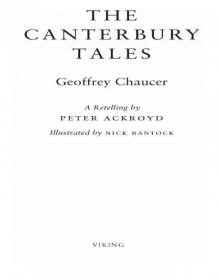 The Canterbury Tales
The Canterbury Tales J. M. W. Turner
J. M. W. Turner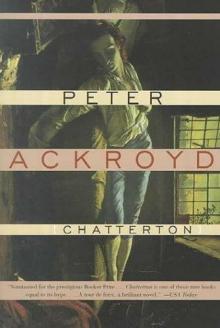 Chatterton
Chatterton The Canterbury Tales – A Retelling
The Canterbury Tales – A Retelling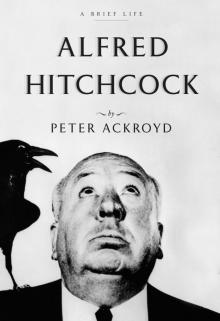 Alfred Hitchcock
Alfred Hitchcock Three Brothers
Three Brothers Wilkie Collins
Wilkie Collins Venice
Venice Poe
Poe The Lambs of London
The Lambs of London London
London Queer City
Queer City Revolution, a History of England, Volume 4
Revolution, a History of England, Volume 4 Venice: Pure City
Venice: Pure City Foundation
Foundation Thames
Thames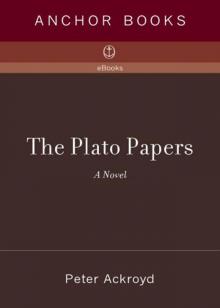 The Plato Papers
The Plato Papers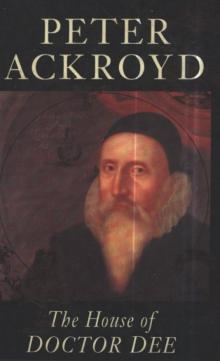 The house of Doctor Dee
The house of Doctor Dee Rebellion: The History of England from James I to the Glorious Revolution
Rebellion: The History of England from James I to the Glorious Revolution Albion: The Origins of the English Imagination
Albion: The Origins of the English Imagination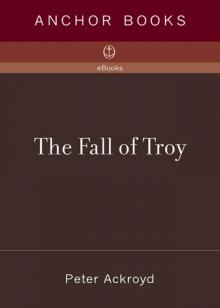 The Fall of Troy
The Fall of Troy The Death of King Arthur
The Death of King Arthur The Trial of Elizabeth Cree
The Trial of Elizabeth Cree London: The Biography
London: The Biography The Casebook of Victor Frankenstein
The Casebook of Victor Frankenstein Hawksmoor
Hawksmoor Charlie Chaplin
Charlie Chaplin London Under
London Under